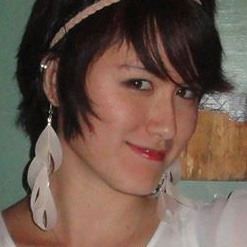
Part 1. Aboriginal Angst
A story by John W. Gehring
The power of one person to effect change should not be underestimated. Exceptional leaders often transcend humble and challenging circumstances to arrive at a destination otherwise thought to be unreachable.
Michael Jarrett, an Aboriginal man from Nambucca Heights, Australia was a person who coupled his dream with character and drive, and turned it into reality. Michael’s journey and the contribution he made to his community is more clearly understood with some background on the history of his people and the land he calls home.
Australia and its First People
Australia today is a nation with a growing, increasingly diverse population. The island continent is called home by waves of new immigrants, by descendants of colonial settlers and by its indigenous people. This is land where the ancient and the modern meet—a meeting often more turbulent than tranquil.
The Aboriginals of Australia, the continent’s original residents, maintain the oldest continuous culture in the world. For tens of thousands of years, they called all that they saw their home. The Aboriginal lifestyle was closely connected to the rhythm and harmony of nature. Typically, they embraced a perception that each person maintains a connection to the earth, the sky, the animals and even the rocks and rivers. Aboriginal cosmology differs greatly from that of Australia’s European settlers. The differing perspectives offered something complementary to each other but, unfortunately, those differences too often were turned into a source of tension and conflict.
Confidence, arrogance, power and fear
European settlers in Australia, despite coming from humble backgrounds (including prison and poverty), were products of a culture filled with confidence. In the eighteenth century when they arrived in large numbers, they saw themselves as gifting to the island continent great advances in science, commerce, religion, law, transportation and farming. Many of the new settlers had a hunger to own and control land because they saw it as a source of food, income and power. In contrast, when the Europeans arrived, the Aboriginal people were semi nomadic hunter-gatherers—they had not yet learned how to use metal nor did they cultivate the land.
 When the Europeans compared their civilization with that of the original “owners,” they concluded that the Aboriginals lacked the natural abilities necessary to own and care for the land. Soon enough they employed this biased judgment as a basis to craft laws prohibiting Aboriginal land ownership—laws that continued to be enforced well into the twentieth century. A member of the Aboriginal community offered his perspective on the use of land during this period: “Our people endeavored to live with the land while they [the settlers] seemed to live off it. We found food where they found none. We were taught to preserve and never to destroy. We had inherited an understanding of life that places each in a kinship with all that surrounds us. Our ways were not appreciated nor respected by the early settlers.”
When the Europeans compared their civilization with that of the original “owners,” they concluded that the Aboriginals lacked the natural abilities necessary to own and care for the land. Soon enough they employed this biased judgment as a basis to craft laws prohibiting Aboriginal land ownership—laws that continued to be enforced well into the twentieth century. A member of the Aboriginal community offered his perspective on the use of land during this period: “Our people endeavored to live with the land while they [the settlers] seemed to live off it. We found food where they found none. We were taught to preserve and never to destroy. We had inherited an understanding of life that places each in a kinship with all that surrounds us. Our ways were not appreciated nor respected by the early settlers.”
Effects of disassociation and dislocation
The cultural differences between the Aboriginals and the settlers served as a source of tension and eventually led to violence. The Aboriginals had only a limited capacity to resist the incursion of the newcomers. At times, both sides struggled and fought, but it was an uneven contest with little doubt about the outcome. In a short period, the status of the Aboriginal people fell from that of a noble caretaker to one where they were regarded as a conquered people.
Over the years, the spirit of the Aboriginal people has suffered from the physical and psychic damage inflicted on them. Efforts were made to alienate them from their cultural roots in that many were forced to live on reservations or in missions separated from the “mainstream” culture. When they did move into the cities, they often received lower pay for their labor.
Generations of Aboriginal children grew up surrounded by an alien society that questioned their values and they, in turn, began to doubt their own unique value. Often, young people had little to identify with except the feeling of not really belonging. Such feelings of alienation/dislocation have been a major cause of the high rate of alcoholism within the Aboriginal community.
Shifting Racial Attitudes
The stinging European attitudes of racial and cultural superiority in Australia lingered into the second half of the twentieth century. The 1970s saw a time of great change within the Aboriginal community. A new attitude of cultural pride began to blossom with a rediscovery of aboriginal music and the popularization of Aboriginal art forms. In 1972, voting rights were finally granted to Aboriginals, while public acts of restorative justice increased. The opening up of the nation’s immigration policy to non-Whites stimulated a growing understanding of different cultures and this encouraged many to reexamine their racial and cultural attitudes.
 One event that occurred in April 1975 hastened the shift in Australia from a rather closed-door policy toward non-White immigration. The civil war in Vietnam ended with the communist government of North Vietnam overwhelming the government of South Vietnam. Australia, the USA and other nations that had aligned with the government of South Vietnam were faced with the moral question of what to do with those South Vietnamese soldiers and civilians who had served and shed blood with them in a common cause. The likelihood of death or imprisonment in communist-run “reeducation camps” awaited their allies if they could not find a country willing to welcome them. Australia chose to open its doors to a wave of endangered South Vietnamese immigrants—an act of service that would mark the beginning of a new era for the nation.
One event that occurred in April 1975 hastened the shift in Australia from a rather closed-door policy toward non-White immigration. The civil war in Vietnam ended with the communist government of North Vietnam overwhelming the government of South Vietnam. Australia, the USA and other nations that had aligned with the government of South Vietnam were faced with the moral question of what to do with those South Vietnamese soldiers and civilians who had served and shed blood with them in a common cause. The likelihood of death or imprisonment in communist-run “reeducation camps” awaited their allies if they could not find a country willing to welcome them. Australia chose to open its doors to a wave of endangered South Vietnamese immigrants—an act of service that would mark the beginning of a new era for the nation.
The impact of the revised Australian immigration policy is very visible today, especially in its big cities. Currently, one of every four persons living in Australia has come from another country. Those entering the new Australia come with their own cultural insights and a fresh set of dreams. They are playing a role in transforming Australia into a global nexus point. Critical to this transformative process is the increasing appreciation for Australia’s Aboriginal people, their culture and their spirituality.
In his youth, Michael Jarrett knew something of the old Australia and he experienced some of its painful judgments and attitudes. Michael was also a part of the new Australia, and his energetic spirit and creative mind were determined to constructively shape Australia’s future. For the sake of his children and community, he worked to open a pathway enabling them to see and experience new horizons.
To be continued…
Part 2. The Wonderful Power of One: Michael Challenges the Odds












